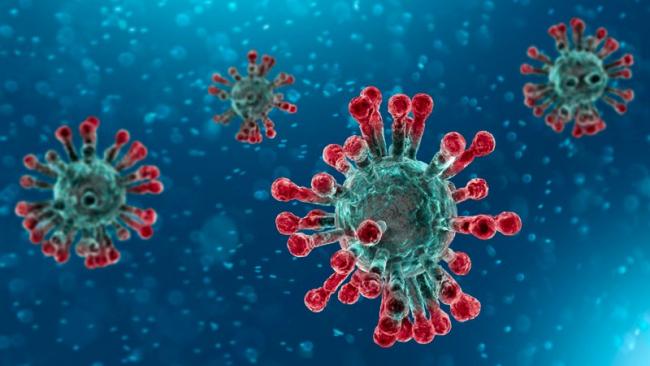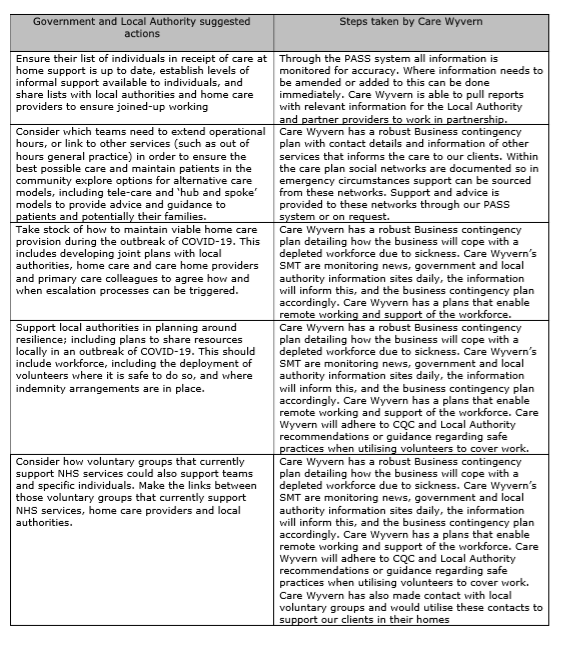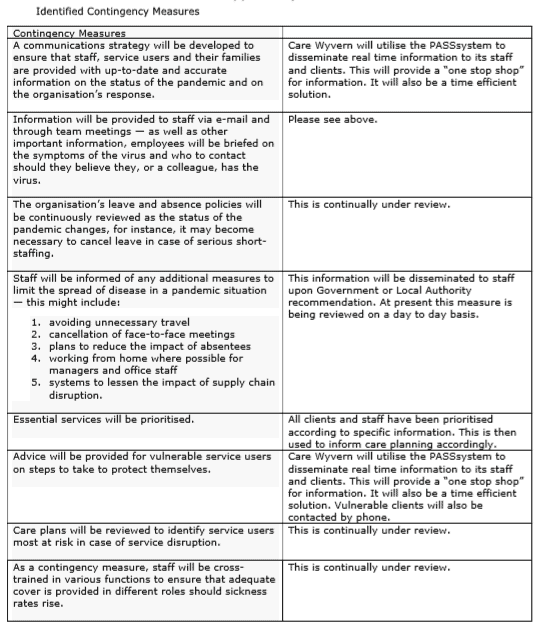Covid-19 Information – update

World Health Organisation (WHO) Q & A information https://www.who.int/news-room/q-a-detail/q-a-coronaviruses
Studies to date suggest that the virus that causes COVID-19 is mainly transmitted through contact with respiratory droplets rather than through the air. People can catch COVID-19 from others who have the virus.
The disease can spread from person to person through small droplets from the nose or mouth which are spread when a person with COVID-19 coughs or exhales. These droplets land on objects and surfaces around the person. Other people then catch COVID-19 by touching these objects or surfaces, then touching their eyes, nose or mouth. People can also catch COVID-19 if they breathe in droplets from a person with COVID-19 who coughs out or exhales droplets. This is why it is important to stay more than 1 meter (3 feet) away from a person who is sick.
It is not certain how long the virus that causes COVID-19 survives on surfaces, but it seems to behave like other coronaviruses. Studies suggest that coronaviruses (including preliminary information on the COVID-19 virus) may persist on surfaces for a few hours or up to several days. This may vary under different conditions (e.g. type of surface, temperature or humidity of the environment).
If you think a surface may be infected, clean it with simple disinfectant to kill the virus and protect yourself and others. Clean your hands with an alcohol-based hand rub or wash them with soap and water. Avoid touching your eyes, mouth, or nose.
Only wear a mask if you are ill with COVID-19 symptoms (especially coughing) or looking after someone who may have COVID-19. Disposable face mask can only be used once. If you are not ill or looking after someone who is ill then you are wasting a mask.
There is a world-wide shortage of masks, so WHO urges people to use masks wisely. WHO advises rational use of medical masks to avoid unnecessary wastage of precious resources and mis-use of masks (see Advice on the use of masks).
The most effective ways to protect yourself and others against COVID-19 are to frequently clean your hands, cover your cough with the bend of elbow or tissue and maintain a distance of at least 1 meter (3 feet) from people who are coughing or sneezing. See basic protective measures against the new coronavirus for more information.
WHO suggest pre-existing health conditions to include;
? High blood pressure
? Lung complaints such as COPD and Asthma
? Weekend or compromised immune systems
? Cardio Vascular disease
? Type 1 or 2 Diabetes may result in greater risk of more severe symptoms
COVID-19: guidance on home care provision Published 13 March 2020 https://www.gov.uk/government/publications/covid-19-residential-care-supported-living-andhome-care-guidance
If an individual is required to self-isolate, then Care Wyvern advises they should remain at home for 14 days following last exposure and avoid close contact with other people as much as possible. That they:
? Avoid having visitors
? Advice for keeping your family safe – https://www.gov.uk/government/publications/covid-19-stay-at-homeguidance/stay-at-home-guidance-for-people-with-confirmed-or-possiblecoronavirus-covid-19-infection
? Ask friends, family or delivery services to drop off any food or medicines that they might need / run other errands on their behalf
? Don’t go to work, school or public areas
? Don’t use taxis or public transport
? Don’t go to the GP or A&E
If a care worker is concerned, they have COVID-19 If a member of staff is concerned they have COVID-19 they should follow NHS advice (https://www.nhs.uk/conditions/coronavirus-covid-19). If they are advised to self-isolate at home they should follow the stay at home guidance, https://www.gov.uk/government/publications/covid-19-stay-at-home-guidance/stay-at-homeguidance-for-people-with-confirmed-or-possible-coronavirus-covid-19-infection If advised to self-isolate at home, they should not visit and care for individuals until safe to do so.
If the individual being cared for has symptoms of COVID-19 If the individual receiving care and support has symptoms of COVID-19, then the risk of transmission should be minimised through safe working procedures.
Personal protective equipment
? Care workers should use personal protective equipment (PPE) for activities that bring them into close personal contact, such as washing and bathing, personal hygiene and contact with bodily fluids.
? Aprons, gloves and fluid repellent surgical masks should be used in these situations. If there is a risk of splashing, then eye protection will minimise risk.
? New personal protective equipment must be used for each episode of care. It is essential that personal protective equipment is stored securely within disposable rubbish bags.
? These bags should be placed into another bag, tied securely and kept separate from other waste within the room. This should be put aside for at least 72 hours before being put in the usual household waste bin.
Cleaning If care workers undertake cleaning duties, then they should use usual household products, such as detergents and bleach as these will be very effective at getting rid of the virus on surfaces. Frequently touched surfaces should be cleaned regularly. Personal waste (for example, used tissues, continence pads and other items soiled with bodily fluids) and disposable cleaning cloths can be stored securely within disposable rubbish bags. These bags should be placed into another bag, tied securely and kept
separate from other waste within your own room. This should be put aside for at least 72 hours before being put in the usual household waste bin for disposal as normal.
Laundry If care workers support the individual with laundry, then they should not shake dirty laundry. This minimises the possibility of dispersing virus through the air. Wash items as appropriate, in accordance with the manufacturer’s instructions. Dirty laundry that has been in contact with an ill person can be washed with other people’s items. If the individual does not have a washing machine, wait a further 72 hours after the 7-day isolation period has ended; the laundry can then be taken to a public laundromat. Items heavily soiled with body fluids, for example, vomit or diarrhoea, or items that cannot be washed, should be disposed of, with the owner’s consent.
If neither the individual nor the care worker have symptoms of COVID-19 If neither the care worker nor the individual receiving care and support is symptomatic, then no personal protective equipment is required above and beyond normal good hygiene practices.
General interventions may include increased cleaning activity and keeping property properly ventilated by opening windows whenever safe and appropriate. Care workers should follow advice on hand hygiene https://assets.publishing.service.gov.uk/government/uploads/system/uploads/attachme nt_data/file/866065/Handwashing_techniques.pdf


